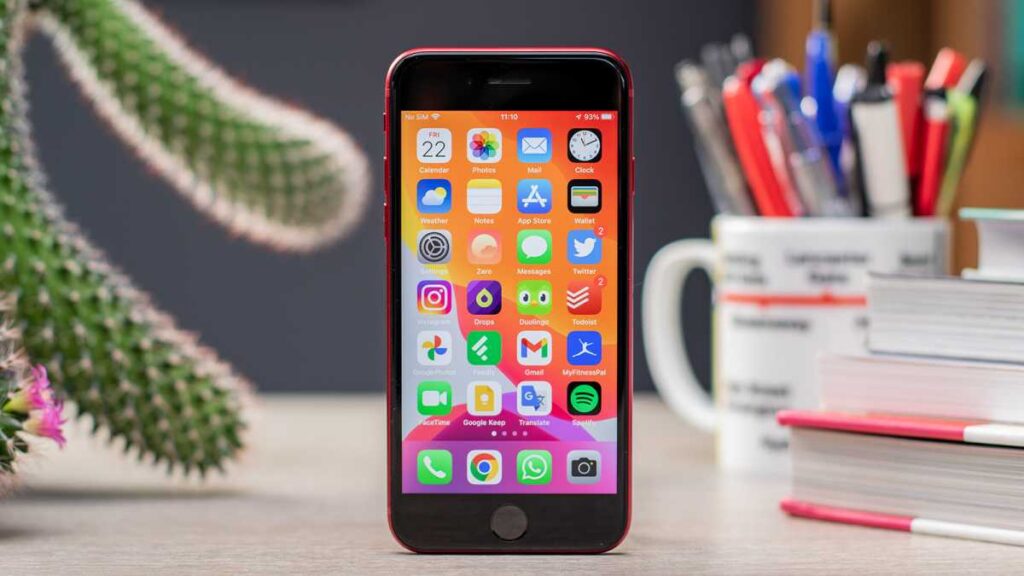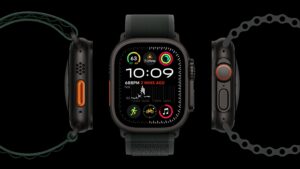iPhone SE 4: Everything you need to know about Apple’s next budget phone

Apple updated its entry-level iPhone in March 2022, adding a few nips and tucks here and there along with a quiet price increase. It kept the Home button and small form factor that appeals to some, but the aging design and minimal upgrades meant the new iPhone SE was coolly received by the masses, with many looking forward to the next generation and reviewers hoping Apple was planning a more radical overhaul of the device.
Rumors are now starting to appear about what that might look like. In this article we’ve gathered together everything we know so far, and what we can reasonably speculate, about the iPhone SE 4. For information about the iPhone 16 series – read our separate article about the iPhone 16 and our separate article about rumors about the iPhone 17.
iPhone SE 4 release date: When will the iPhone SE 4 be released?
Spring 2025 (estimated)
Apple’s iPhone SE doesn’t follow the same predictable annual release schedule as the standard iPhone line, and the intervals between updates can be harder to predict. The timing of the next launch points to a biennial routine, but that followed a far longer gap between the first and second phones. Here’s when the three models released so far made their debut:
iPhone SE (3rd gen): March 2022
iPhone SE (2nd gen): April 2020
iPhone SE (1st gen): March 2016
Analyst Jeff Pu thinks that the iPhone SE will arrive in 2025. Since the SE models typically launch in the spring, it seems obvious that we’re looking at a spring 2025 release date (or later).
Furthermore, Ming-Chi Kuo tweeted that Apple was using a prototype iPhone SE to test its 5G modem, which will arrive in the iPhone SE before the flagship iPhone models. Kuo states that “there are no plans for mass production and sales” of this prototype iPhone SE and has reported that the next iPhone SE isn’t expected until 2025.
Dominik Tomaszewski
iPhone 4 SE price: How much will the iPhone SE 4 cost?
Pricing has steadily increased across the three existing generations, no doubt influenced by the global cost of components and distribution. While the iPhone SE (3rd generation) was released around the same price as the model it replaced, Apple added a chunk onto the cost, making the current model somewhat less desirable than previous iterations, especially when you factor in the measly amount of storage that comes with the baseline model.
At launch the prices were even higher in the U.K. but, in September 2023, after adjusting for inflation, Apple dropped the price back to match the U.S. price. Apple did the same thing for prices in Euros in September 2024.
Here’s how they line up:
iPhone SE (3rd gen, 2022):
64GB: $429/£429 (was £449 at launch)
128GB: $479/£479 (was £499 at launch)
256GB: $579/£579 (was £609 at launch)
iPhone SE (2nd gen, 2020):
64GB: $399/£419
128GB: $449/£469
256GB: $549/£569
iPhone SE (1st gen, 2016):
32GB: $399/£379
128GB: $499/£449
However, the iPhone SE needs to be inexpensive, and we’d be surprised to see the price increase too much with the next generation, even with several rumored upgrades. The latest rumors claim the 4th-gen iPhone SE could start at $499, still far less expensive than any other new iPhone Apple sells.
Bloomberg’s Mark Gurman claims the next model is intended to help Apple compete with low-end Android phones in China, so a low price would be necessary to achieve this plan.
iPhone 4 SE design: What will the next iPhone SE look like?
Will the iPhone SE get a long-overdue design revamp? Rumors suggest that we could see a move away from the iPhone 8 chassis to something more like the iPhone 14, or even the iPhone 16.
The big difference will be good or bad news depending on your viewpoint. It seems likely that the Home button will be no more. Some people prefer the Home button as a means to interact with their iPhone, for some older people and those who are less dexterous it is helpful to have a physical button. If the iPhone SE has an action button this could take on the role of the Home button for those who require it.
No Home button is likely to mean a notch – and that’s a notch, rather than the Dynamic Island. So perhaps the iPhone 14 will lend its shell to the new iPhone SE.
Over the years there has been a lot of speculation as to which older iPhone could lend its chassis to the next-generation iPhone SE. Apple can lower production costs by not straying too far from an existing chassis.
iPhone 13 mini? As the iPhone SE has always traditionally been one of the smallest devices Apple offers, it seems logical that the discounted iPhone 13 mini format might make its way down to replace the iPhone 6 chassis on the SE.
iPhone XR? On an August 2022 episode of the Geared Up podcast, tech tipster Jon Prosser said the “iPhone SE 4… is just the iPhone XR,” meaning it has an “all-screen” design and a 6.1-inch display.
However, a report by Ross Young in late October 2022 claimed that Apple is mulling a 5.7-inch display, which would be a new size for an iPhone. The iPhone 13 mini is 5.4 inches and the iPhone X and XS were 5.8 inches. Young also says that Apple is deciding whether to use LCD or OLED for the display.
iPhone 14? In February 2023, analyst Ming-Chi Kuo reported that Apple is moving forward with a 6.1-inch OLED display for the iPhone SE 4 with an overall design and features similar to the iPhone 14. Another rumor in April 2024, suggest that the body will resemble an iPhone 14, with a 6.1-inch OLED and notch. The rumored dimensions of the iPhone SE 4 state that it could be about the same size as the iPhone 15 but a smidge taller.
iPhone 16? Finally, a rumor in July 2024 suggested Apple will change course with the iPhone SE 4 and instead use the same body as the iPhone 16, making it a true budget version of the latest iPhone lineup.
If Apple chooses to use the chassis of the iPhone 16 rather than the iPhone 14 that could allow the best alignment of two camera lenses for talking videos for the Vision Pro. But that would mean that the iPhone SE would have two cameras on the back, rather than just one, as it does currently.
iPhone SE 4 specs: Will Apple Intelligence be supported?
Now that iOS 18 is here, Apple is preparing its devices for Apple Intelligence AI features which will arrive with iOS 18.1 in the fall. Not all devices currently sold are compatible. The iPhone 16, 16 Plus, 16 Pro and 16 Pro Max and the iPhone 15 Pro and 15 Pro Max are the only iPhones that currently support those features. That means that the iPhone 15 and 15 Plus, and the iPhone 14 and 14 Plus do not support Apple Intelligence.
Processor & RAM: To run Apple Intelligence an iPhone requires an A17 or A18 chip and 8GB of RAM. There is some expectation that the iPhone SE 4 could meet these requirements. But that would be a strange choice on Apple’s part as it would make both the iPhone 15 and iPhone 14 redundant. But it would be strange to launch a new product that didn’t support Apple Intelligence at this point in time.
Alternatively, the iPhone SE 4 could take the place of the iPhone 14 in the lineup with the same A15 chip. It all depends on where Apple sees the iPhone SE in the range and what its purpose is.
Other than the processor and RAM requirements, we may see some other internal changes including the following:
Modem: The iPhone SE 4 might be the first iPhone to feature one of Apple’s own 5G modems. In February 2023 analyst Ming-Chi Kuo expected it to be and claimed the baseband chip will be manufactured with a 4nm process and support only sub-6GHz bands. In April 2023, MacRumors reported that analyst Jeff Pu believes that Apple will release a fourth-generation iPhone SE with an Apple-designed 5G modem in 2025. TSMC will manufacture the modem chip. However, Pu doesn’t have a track record for accuracy like other analysts. In April 2023, Kuo tweeted that the iPhone SE 4 is dead (again) and that Apple is using an engineering prototype iPhone SE to test its 5G modem.
Storage: With the iPhone 13 range moving to a baseline of 128GB (and the 14-series handsets following suit), it’s hoped that the new iPhone SE might do likewise, as 64GB isn’t enough for most people anymore, especially since system files take up more than 10GB. But we’re not terribly hopeful—the iPhone SE (3rd gen) launched after the iPhone 13 range and still started with the same 64GB of storage, and the redesigned 10th-generation iPad also starts at 64GB. We explain more about this in why you shouldn’t buy the 64GB iPhone SE.
USB C: We expect the iPhone SE 4 to feature a USB-C port for charging, as all new iPhones do, and IP68 water resistance. The current SE is one of the last remaining Apple devices to still have a Lightning port.
Camera(s): One of the defining features of the iPhone SE is a single camera on the back. This is probably not going to change, although if the new iPhone SE does adopt the chassis of an iPhone 14 or 16 it is possible. Regardless, we expect a similar 12MP wide-angle lens, despite the move to 48MP main camera on the iPhone 15 and iPhone 16. The selfie camera is also expected to be 12MP.
iPhone SE 4: Will the new iPhone SE use Touch ID or Face ID?
The most recent rumors say the new iPhone SE will have Face ID with a notch (not dynamic island), similar to an iPhone 13 or iPhone 14. That means Touch ID, which has been a staple of the SE line since its debut, will go away.
iPhone history
The iPhone 16 range and the iPhone SE 3 are the current-generation models available from Apple. In addition to this SE 4 model we’re also expecting iPhone 17 to launch in 2025. Below you can find links below to our reviews of all iPhone models, including the latest generation. Learn more about all the new Apple products coming this year and when is the next Apple event. You might also want to check out our advice on when is the best time to buy a new iPhone, our iPhone buying guide, and our comparison of every iPhone that is available to buy today.
iPhone SE (1st generation; 2016) review
iPhone 11 Pro Max (2019) review
iPhone SE (2nd generation; 2020) review
iPhone 12 Pro Max (2020) review
iPhone 13 Pro Max (2021) review
iPhone SE (3rd generation; 2022) review
iPhone 14 Pro Max (2022) review



